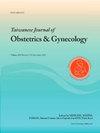Cervical pessary for preterm-birth prevention among pregnant women with a short cervix: A prospective cohort study
IF 2.2
4区 医学
Q2 OBSTETRICS & GYNECOLOGY
引用次数: 0
Abstract
Objective
Congenital abnormalities or secondary factors are reasons for cervical insufficiency. The Arabin pessary has been widely adopted in several countries to manage the condition. However, its usage has yet to be prevalent in Vietnam. This study aimed to evaluate the success rate of delivery (at 34 weeks or later) after Arabin pessary in pregnant women with a short cervical length (<25 mm) at Hung Vuong Hospital and adverse events.
Materials and methods
A prospective cohort study was conducted on 176 pregnant women, involving singleton pregnancies with gestational ages ranging from 24 to 32 weeks and cervical lengths less than 25 mm. The participants who agreed to the Arabin pessary were monitored periodically, and any adverse events were recorded until spontaneous labor occurred.
Results
From January to October 2022, pregnant women with Arabin pessary placement were followed until delivery at Hung Vuong Hospital. The success rate (birth at 34 weeks or later) was 88.1 % (95 % CI: 82.3–92.5), and the full-term birth rate (at 37 weeks or later) was 64.8 %. Adverse effects included vaginal discharge (29.7 %), fungal vaginitis (8.7 %), and urinary tract infection (5.8 %); neonates admitted to the NICU accounted for 11.4 %. Regression analysis revealed a significant association between a history of preterm birth and the incidence of preterm birth before 34 weeks (OR = 3.4, 95 % CI [1.1–10.5], p = 0.02).
Conclusions
The success birth rate (delivered from 34 weeks or later) was high when placing the cervical pessary in pregnant women with a short cervical length <25 mm. The history of preterm birth was associated with the rate of delivery before 34 weeks of gestation. The results of this cohort study underscore the need for further investigation in large-scale advanced studies to establish a higher level of evidence and ensure the best outcomes for maternal and child health.
短子宫颈孕妇预防早产的宫颈托:一项前瞻性队列研究
目的生殖器官异常或继发因素是导致宫颈功能不全的主要原因。一些国家已广泛采用阿拉伯托钵来控制这种情况。然而,它的使用在越南尚未普及。本研究旨在评估在Hung Vuong医院接受短宫颈长度(25mm)孕妇Arabin子宫托后(34周或更晚)的分娩成功率和不良事件。材料与方法对176例孕龄24 ~ 32周、宫颈长度小于25mm的单胎妊娠妇女进行前瞻性队列研究。同意使用Arabin子宫托的参与者定期监测,并记录任何不良事件,直到自然分娩发生。结果从2022年1月至10月,在Hung Vuong医院对放置Arabin子宫托的孕妇进行随访,直至分娩。成功率(34周及以后出生)为88.1% (95% CI: 82.3-92.5),足月出生率(37周及以后出生)为64.8%。不良反应包括阴道分泌物(29.7%)、真菌性阴道炎(8.7%)和尿路感染(5.8%);新生儿入住NICU占11.4%。回归分析显示早产史与34周前早产发生率显著相关(OR = 3.4, 95% CI [1.1-10.5], p = 0.02)。结论宫颈长度较短(25mm)的孕妇放置宫颈托可提高34周及以后分娩的成功率。早产史与妊娠34周前的分娩率相关。这项队列研究的结果强调需要在大规模高级研究中进行进一步调查,以建立更高水平的证据,并确保孕产妇和儿童健康的最佳结果。
本文章由计算机程序翻译,如有差异,请以英文原文为准。
求助全文
约1分钟内获得全文
求助全文
来源期刊

Taiwanese Journal of Obstetrics & Gynecology
OBSTETRICS & GYNECOLOGY-
CiteScore
3.60
自引率
23.80%
发文量
207
审稿时长
4-8 weeks
期刊介绍:
Taiwanese Journal of Obstetrics and Gynecology is a peer-reviewed journal and open access publishing editorials, reviews, original articles, short communications, case reports, research letters, correspondence and letters to the editor in the field of obstetrics and gynecology.
The aims of the journal are to:
1.Publish cutting-edge, innovative and topical research that addresses screening, diagnosis, management and care in women''s health
2.Deliver evidence-based information
3.Promote the sharing of clinical experience
4.Address women-related health promotion
The journal provides comprehensive coverage of topics in obstetrics & gynecology and women''s health including maternal-fetal medicine, reproductive endocrinology/infertility, and gynecologic oncology. Taiwan Association of Obstetrics and Gynecology.
 求助内容:
求助内容: 应助结果提醒方式:
应助结果提醒方式:


